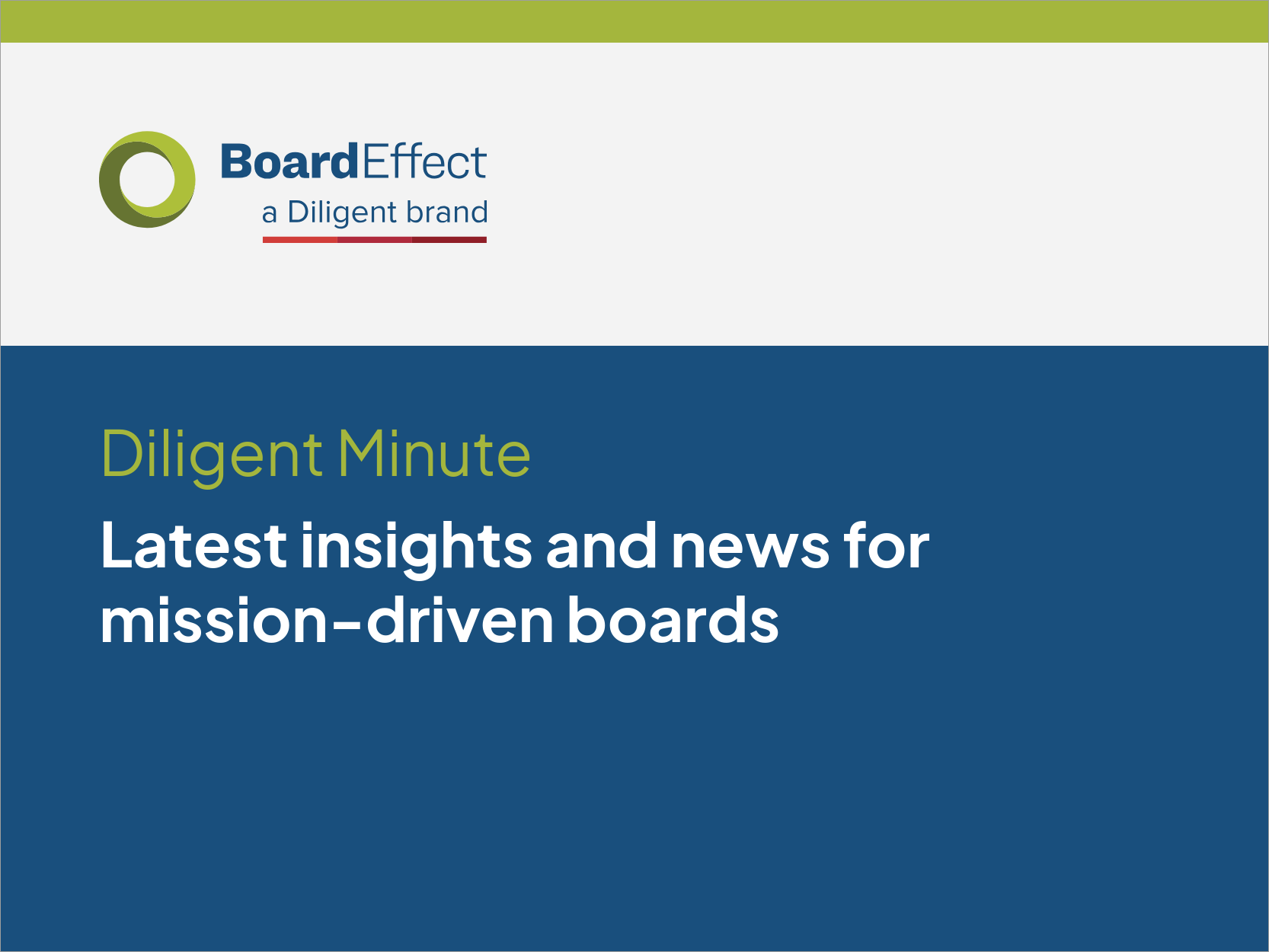
Cutting through the noise: The keys to efficient board collaboration
If you’re like most people, checking your email is part of your morning routine. With the average person getting over 121 business emails per day, there’s a lot of information to sift through. Now add in your personal and spam emails, and things are getting really noisy.
It’s nice to be so connected, but too much information isn’t necessarily better than having limited communication. Volunteer board members are often stretched thinly as it is, making it painful to cut through the noise and focus on board issues. Time and the ability to focus are at a premium, so how can your board set the stage for efficient board collaboration? Has your board considered how the right digital tools can help you to work more efficiently?
The problem of digital noise in board business
When your email inbox is so overloaded with new emails, it’s tough to sort out the ones that demand immediate attention. Even if you’ve cleaned up your email early in the morning, chances are good that emails are continuing to come in all day long, begging you to open them and disrupting your workflow. One link leads to another and before you know it, you’ve gone down the digital information rabbit hole. Hours later, you realise you’ve accomplished virtually nothing. The reality is that while digital communication doesn’t make much audible noise, it can be loud enough to distract you from your board duties.
Beyond the time your board members are taking to read an influx of emails, there’s a residual problem of the toll that disruption takes on your time. If you were to take the number of times you get distracted during an average workday and multiply it by 25, you’ll get a better idea of how many minutes of focus time you’re losing every day. Gloria Mark, a professor at the University of California, studied the issue of digital distraction. Her research showed that it takes people an average of 25 minutes to refocus on an issue after they’ve been disrupted by some type of digital communication. Mark’s studies highlight why digital noise is a problem and how it steals our ability to focus, causing us to lose our working memory and stop listening.
Mark’s work also explains why information overload can easily lead to a lack of board engagement. Over time, your board will find that it’s challenging to accomplish what it needs to, and board performance will surely suffer. Nonprofit boards that are performing marginally also find it difficult to attract and retain quality talent for the board and executive leadership positions.
Your board has a limited amount of time for board meetings and board business, in general. If your board is struggling with time management and digital noise, it’s time to have a full board discussion about how to make strides toward efficient board collaboration.
Developing strategies for efficient board collaboration
Digital transformation was intended to make communication and collaboration more efficient, rather than bog it down. As much as technology has become part of the problem, it’s also part of the fix when you use the right board technology.
If efficient board collaboration is plaguing your board, it’s time to give it a high priority. With that in mind, let’s look at some strategies for how to shield your board members from digital noise and set up processes to collaborate more efficiently.
- Create an awareness of the problem of digital noise within your board. Put it on your board agenda for discussion. Gather research on the problem of digital noise and highlight the consequences of it to support your case for wanting to set up strategies for efficient board collaboration. Your board will be more inclined to take the issue seriously, once you give it a recognisable name.
- Encourage your board members to be intentional about the type and amount of information they send to others, so they don’t miss something important. Strive to keep communications simple and concise. Focus on the most important issue you need to convey.
- Spread out the board’s duties between all board members. Don’t allow a few board members to do the work of many. Ensure that all board members are actively involved in overseeing the organisation.
- Prioritise board activities. When the most urgent matters have been accomplished, move on to the priorities that are next on the list.
- Use a board management system to streamline all board processes.
How a board management system helps cut down the noise
Your board has many choices for technology that you can use for electronic communication and file-sharing. It’s common for boards to try to establish a system of communication by crafting various disconnected digital tools together. BoardEffect designed a board management solution with the distinct purpose of streamlining board activities. With BoardEffect, you get a fully contained platform that’s protected by state-of-the-art security.
These are some of the ways a board management system can help your board to reduce noise and ensure efficient board collaboration:
- Set up a shared board calendar within the board portal so all board members can view board activities at a glance.
- Create a board agenda template for creating your board meeting agendas.
- Create board books online quickly and easily, and distribute them digitally.
- Use your solution for sending board communications so they don’t get lost in personal email accounts.
- Use the meeting minutes feature to streamline taking minutes and approving them electronically.
- Use your board management software for unanimous consent approvals.
BoardEffect’s goal is to simplify and streamline governance processes so your board can focus on getting the important work done. BoardEffect doesn’t have a limit on file size, and it gives you full control of sharing versions. Board members can mark up or annotate files as they wish and share them with or without comments. Use the granular permissions feature to set up internal communications processes for committees and task forces, so that only the appropriate people are copied in on the emails they need.
Our software provides the framework to allow your board to be agile and responsive in all of your board activities for the present and the future, so you can start to get rid of unwanted noise and give your board’s work the due diligence it demands.







